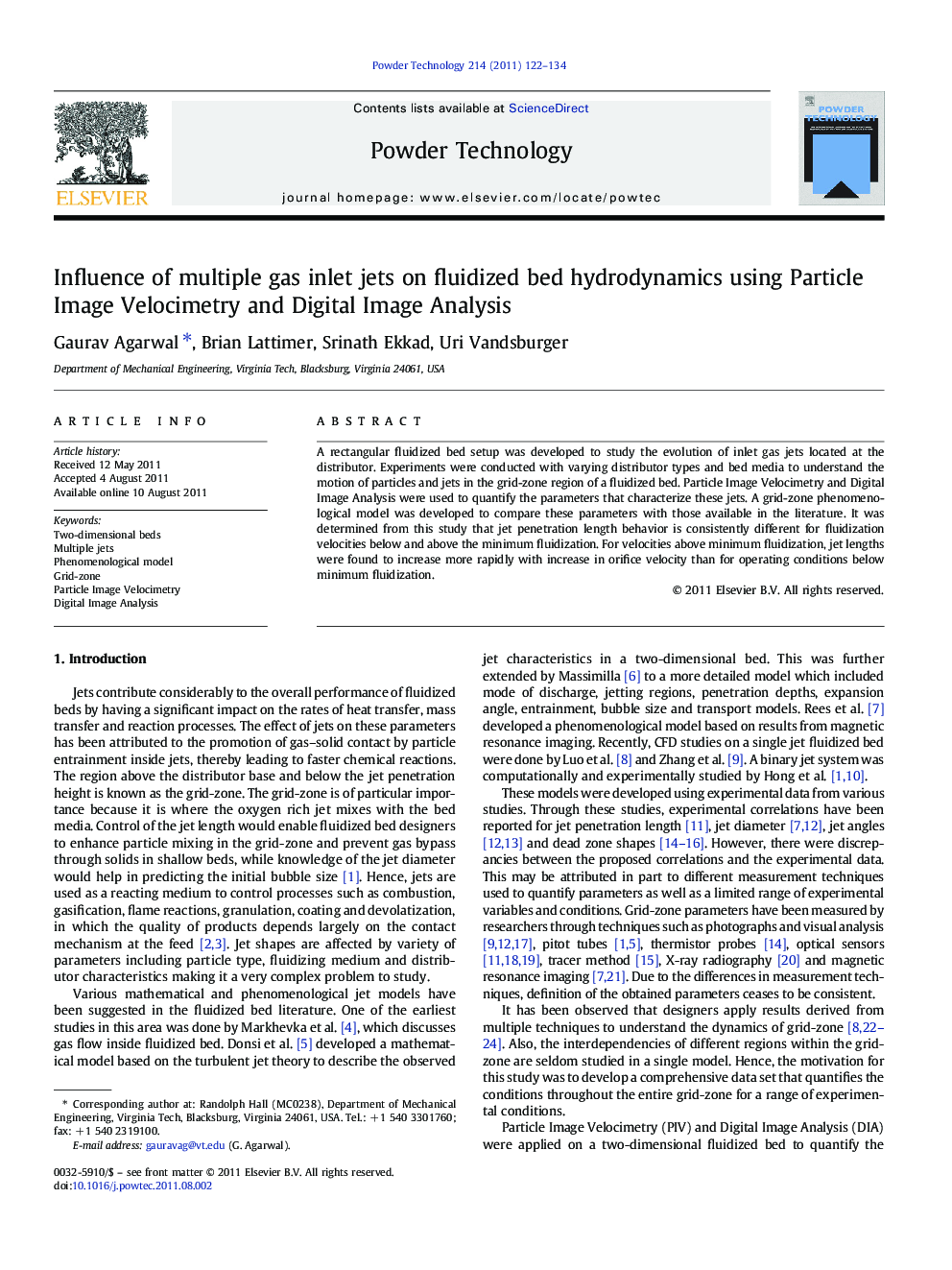| Article ID | Journal | Published Year | Pages | File Type |
|---|---|---|---|---|
| 237519 | Powder Technology | 2011 | 13 Pages |
A rectangular fluidized bed setup was developed to study the evolution of inlet gas jets located at the distributor. Experiments were conducted with varying distributor types and bed media to understand the motion of particles and jets in the grid-zone region of a fluidized bed. Particle Image Velocimetry and Digital Image Analysis were used to quantify the parameters that characterize these jets. A grid-zone phenomenological model was developed to compare these parameters with those available in the literature. It was determined from this study that jet penetration length behavior is consistently different for fluidization velocities below and above the minimum fluidization. For velocities above minimum fluidization, jet lengths were found to increase more rapidly with increase in orifice velocity than for operating conditions below minimum fluidization.
Graphical abstractParticle Image Velocimetry and Digital Image Analysis were used to quantify the parameters that characterize jets and understand the motion of particles surrounding them in the grid-zone region of the fluidized bed. A grid-zone phenomenological model was developed to compare these parameters with those available in the literature.Figure optionsDownload full-size imageDownload as PowerPoint slideHighlights► PIV and DIA used to quantify and develop grid-zone phenomenological model. ► Grid-zone divided into 3 regions: particle moving zone, dead zone and jetting zone. ► Isolated, transitional and interacting jet systems defined using grid-zone parameters. ► Correlations developed for grid-zone parameters and compared with literature. ► Jet length rose sharply for velocities above minimum fluidization requiring 2 correlations to describe the jet behavior.
